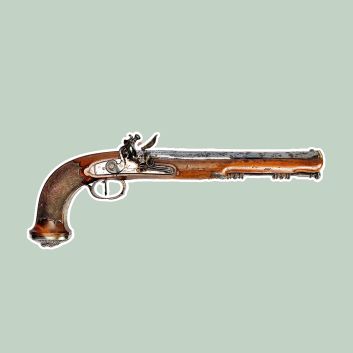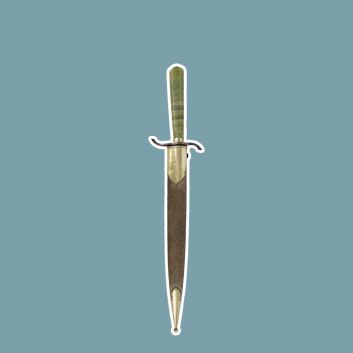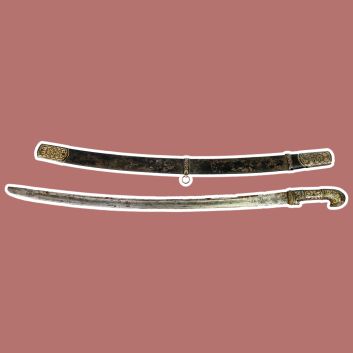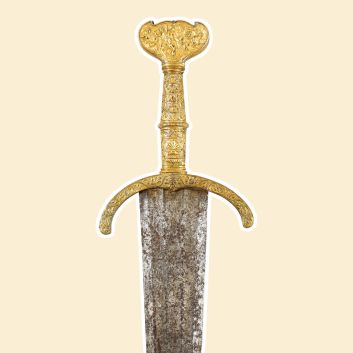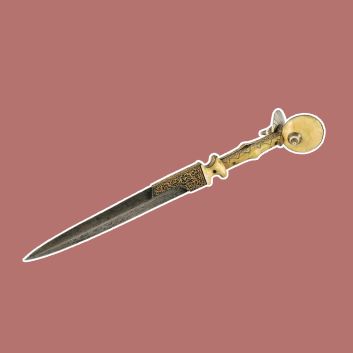Rating and value of rapier swords
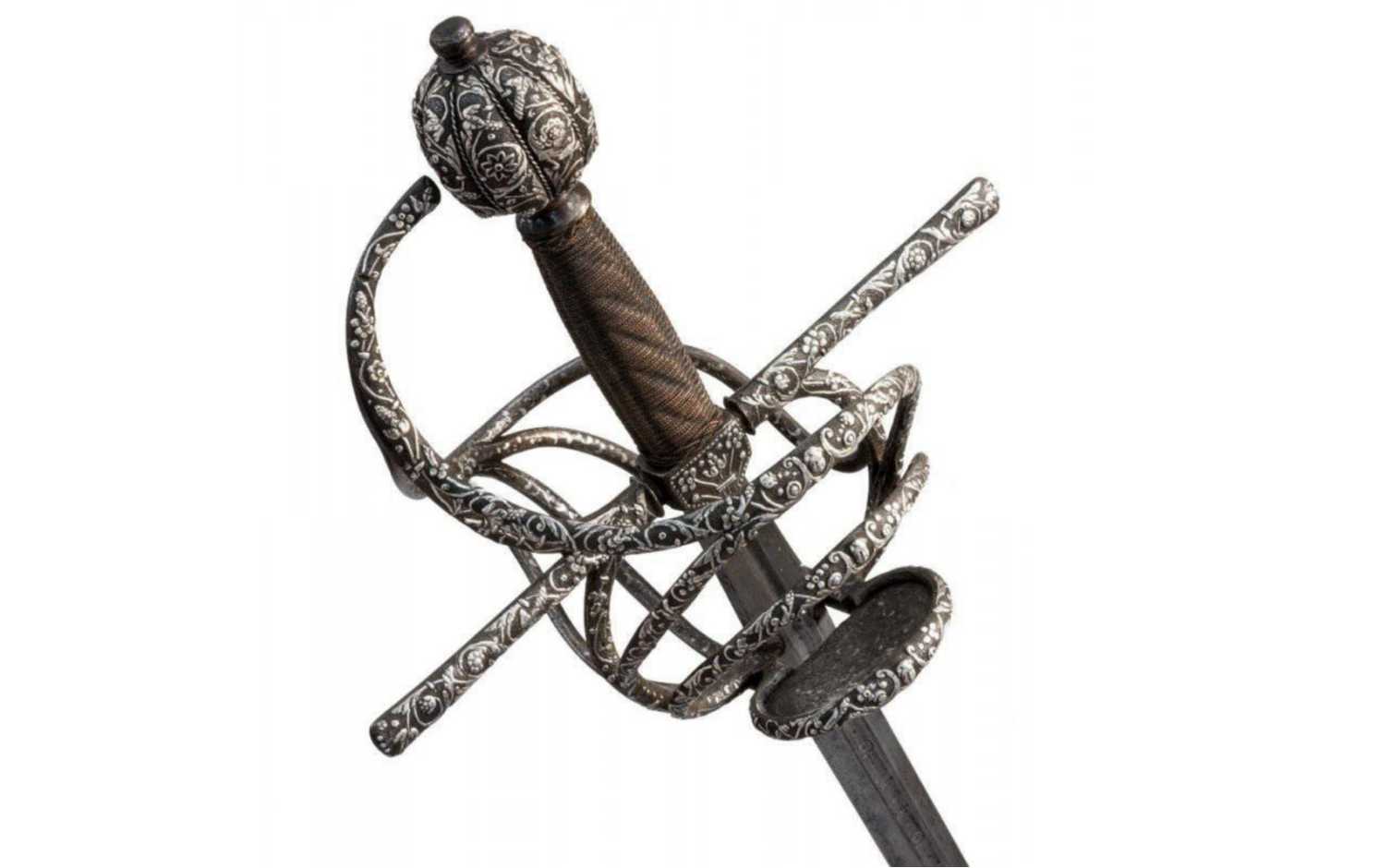
If you own a rapier sword, and would like to know its value, and if you don't know, the period and model of the weapon, our state-approved experts and auctioneers will offer you their appraisal services. Our specialists will carry out a free appraisal of your weapon, and provide you with a precise estimate of its value on today's market. Then, if you wish to sell your item, we'll guide you towards the best possible means of obtaining the best possible price.
Rating and value of rapier swords
Rapier swords are among the most sought-after military collectibles on the auction market. However, price differences can be considerable, depending on the model, engraving, plate, state of preservation, owner and other criteria. Nowadays, prices for these weapons can rise considerably under the auctioneer's hammer. Buyers from all over the world are interested in the sale of certain rare pieces. The price at which they sell on the art market currently ranges from €340 to €9,200 - a considerable difference, but one that says a lot about the value that can be attributed to rapier swords. In 2020, an 18th-century German straight-bladed rapier sword measuring 1.20 meters sold for €9,200. It was originally estimated at between €3,000 and €3,500. Here's a look back at past auctions and more information on these weapons.
Order of value from a simple weapon to the most prestigious
Rapier type | Results |
|---|---|
Reproduction rapier swords | From €120 to €250 |
Taza rapier sword | From €350 to €2,820 |
Rapier sword with long quillons | From €600 to €9,200 |
Response in less than 24h
Rapier swords, prestigious weapons
Rapier swords are highly prized antique weapons on the auction market. They were used for both civilian and military purposes and, unlikecinquedea swords, were actually used for fighting. They first appeared in Spain in the 15th century, when they were calledespadaropera. The weapon is very light and has long been an invaluable tool in Spanish war strategy. These weapons were imported to Italy, where fencing schools were developed.
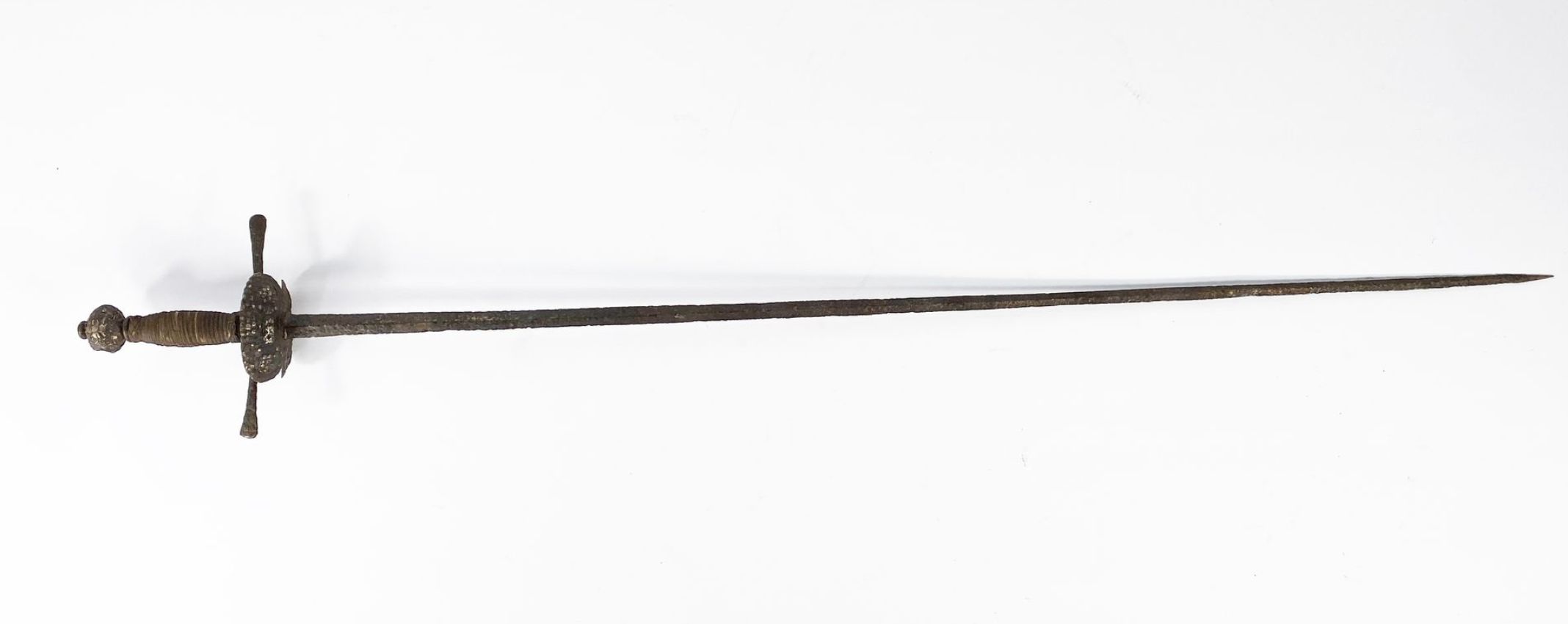
Rapier sword techniques and features
Rapier swords are mainly characterized by their long blades, designed for thrusting. In the 15th and 16th centuries, blades were sharpened and designed to strike directly with the point and edge of the blade.
It derives directly from the cut and thrust sword, made for the same purpose.
At first, rapier swords had a classic shape, with wide quillons. However, there was no hand-hold, which posed a problem for fencing, where gloves were not allowed. Weapons manufacturers therefore innovated and produced rapiers with a basket, consisting of thin metal blades attached to the ricasso. The weapon's grip was also improved, with a ring placed on the ricasso to protect the index finger and guarantee greater stability. The guards were also improved over time. Bolognese fencing masters such as Antonio Manciolino and Achille Marozzo made a major contribution, drawing inspiration from medieval combat systems.
Next came the taza sword, named after the shape of the basket, which was no longer composed of thin metal blades but a thin wrought-iron bowl.
However, despite stylistic evolutions, they share common attributes, such as the presence of inlaid iron, silver, copper, flower decorations and long guillons. They often feature silver plates depicting a cavalry clash or a battle scene, as on the rapier sold by Auctie's (see photo opposite).
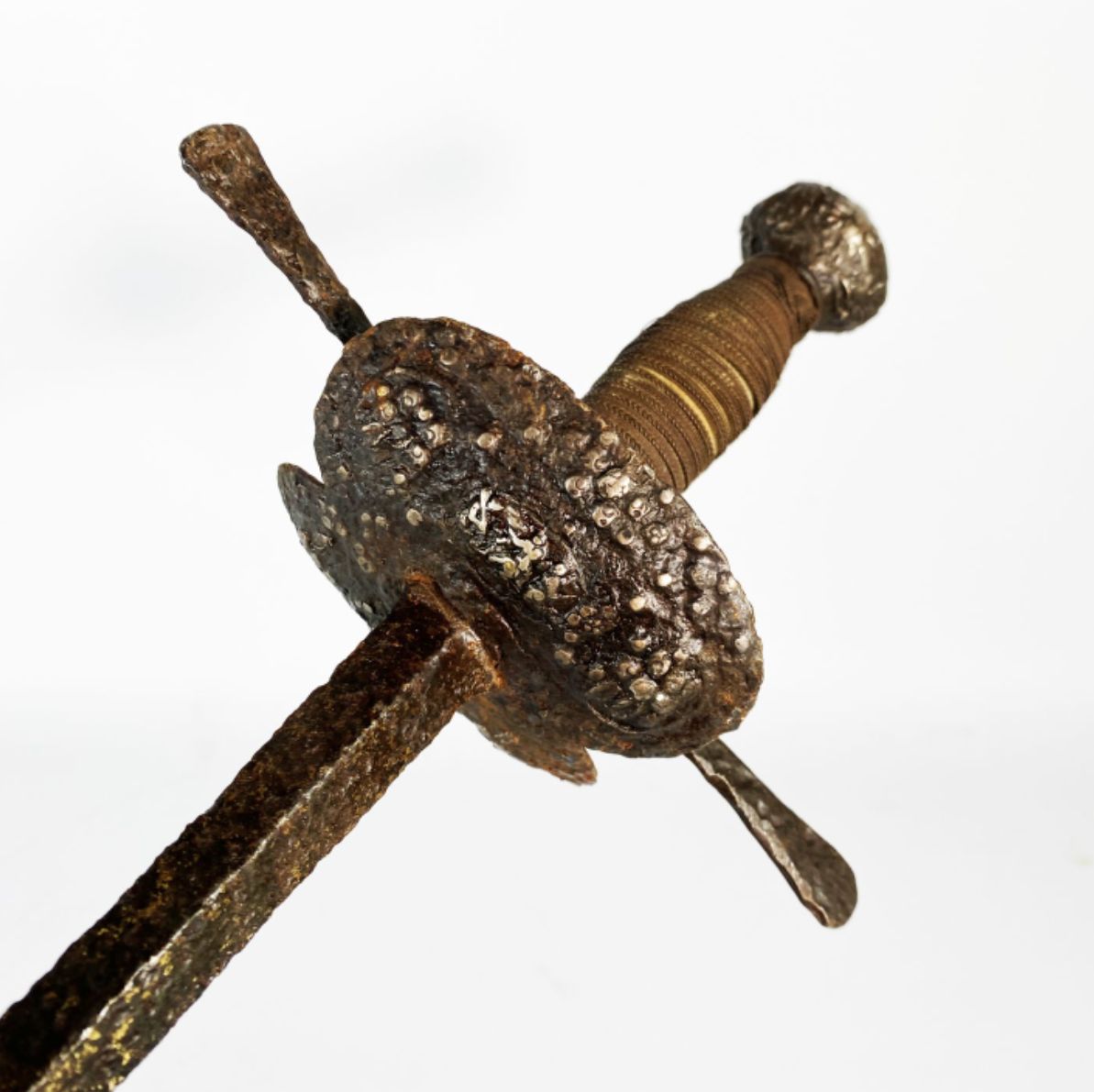
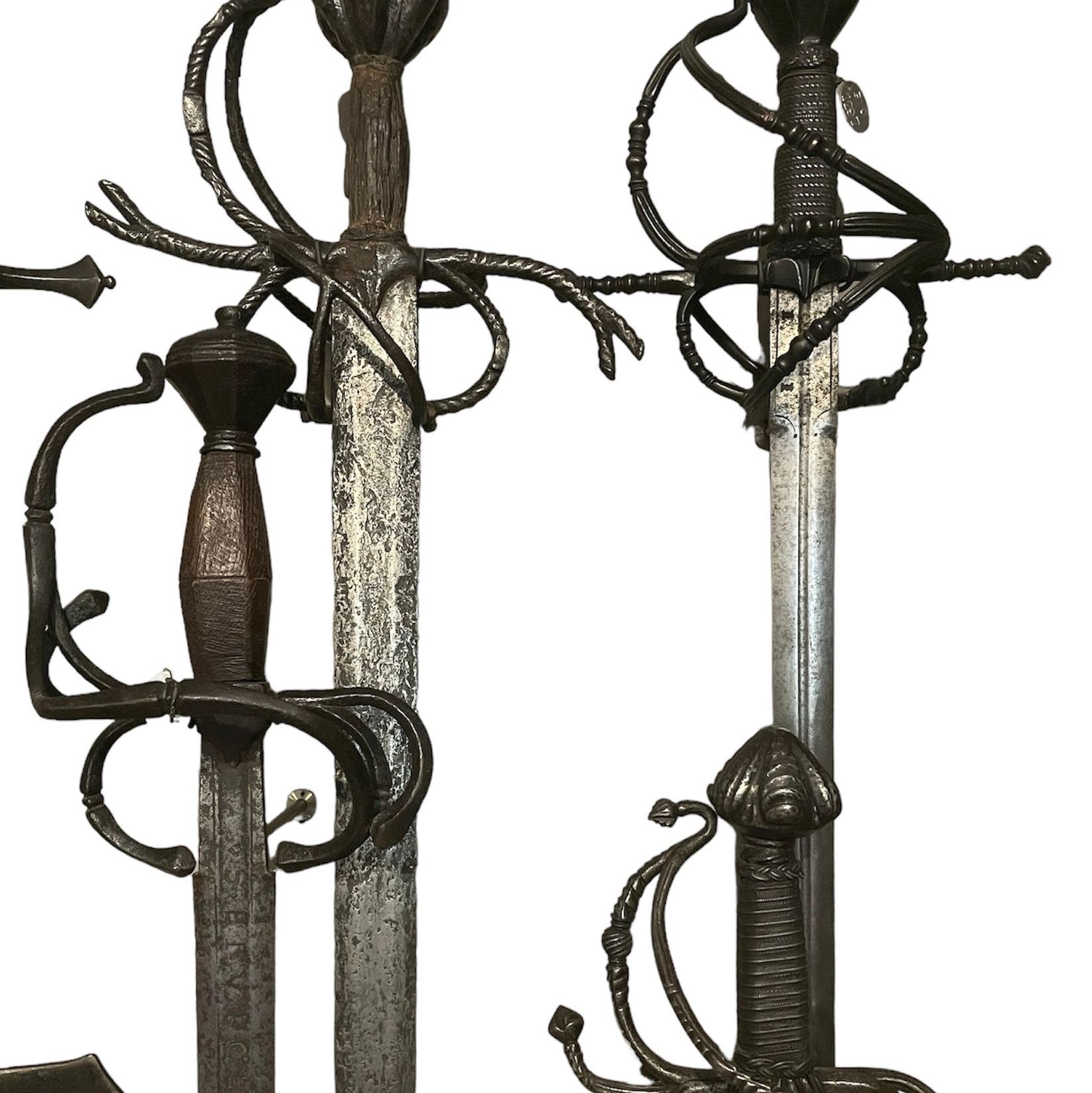
Historical background and success of Caravaggio's sword
Rapiers were swords originally designed for utilitarian purposes, and were to prove successful in this respect. They were a true strategic innovation for combat. Their use also developed in a more private sphere. Caravaggio, the great Italian painter of the late Renaissance, preceded by his reputation, is also famous for having used this model of sword in battle.
At the end of the 16th century, the left-hand dagger was favored in the manufacture of these swords, and new limbs were added to the basket to create a more aesthetically pleasing weapon. This was known as the skeleton rapier, the most characteristic model of the rapier sword.
Gradually, these weapons became court weapons, used as symbols of power and might. As a result, they were no longer useful in combat.
In France, under the reign of Louis XIII, the military function of these weapons was completely abandoned. The blade is lighter, the basket has disappeared and the quillons are even more elaborate.
Reasons to auction a rapier sword
If you own a rapier sword and don't know how to sell it, auctions are a solution. Indeed, collectors use this medium to find models that correspond to a particular battle or that belonged to their ancestors. Prices can reach unprecedented heights.
Rapiers obviously have a financial value on the art market, but they also have a historical value. These weapons bear witness to the various conflicts of their time, and to the power wielded by those who owned them. They also show how weapon design has evolved scientifically.
Knowing the value of a rapier sword
If you happen to own a rapier from any period and would like to know its value, don't hesitate to request a free appraisal using the form on our website. A member of our team of experts and certified auctioneers will contact you promptly to provide you with an estimate of the market value of your piece, as well as any relevant information about it. If you wish to sell your property, our specialists will also be on hand to help you find alternatives for selling it at the best possible price, taking into account market trends.
Response in less than 24h
Related topics

Rating and value of cinquedea swords and daggers
cinquedea swords are rare collectors' items, highly prized at auction. Their value continues to rise.
Read more >

Rating and value of hussar sabres, cavalry
Hussar sabers are bladed weapons worn by cavalry soldiers known as hussars. They are highly prized at auction.
Read more >
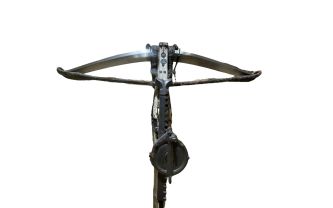
Rating and value of crossbows
Crossbows are sought-after antique weapons at auction, and can fetch high prices. Their value is fairly stable. Estimate in 24h
Read more >
Secure site, anonymity preserved
State-approved auctioneer and expert
Free, certified estimates
